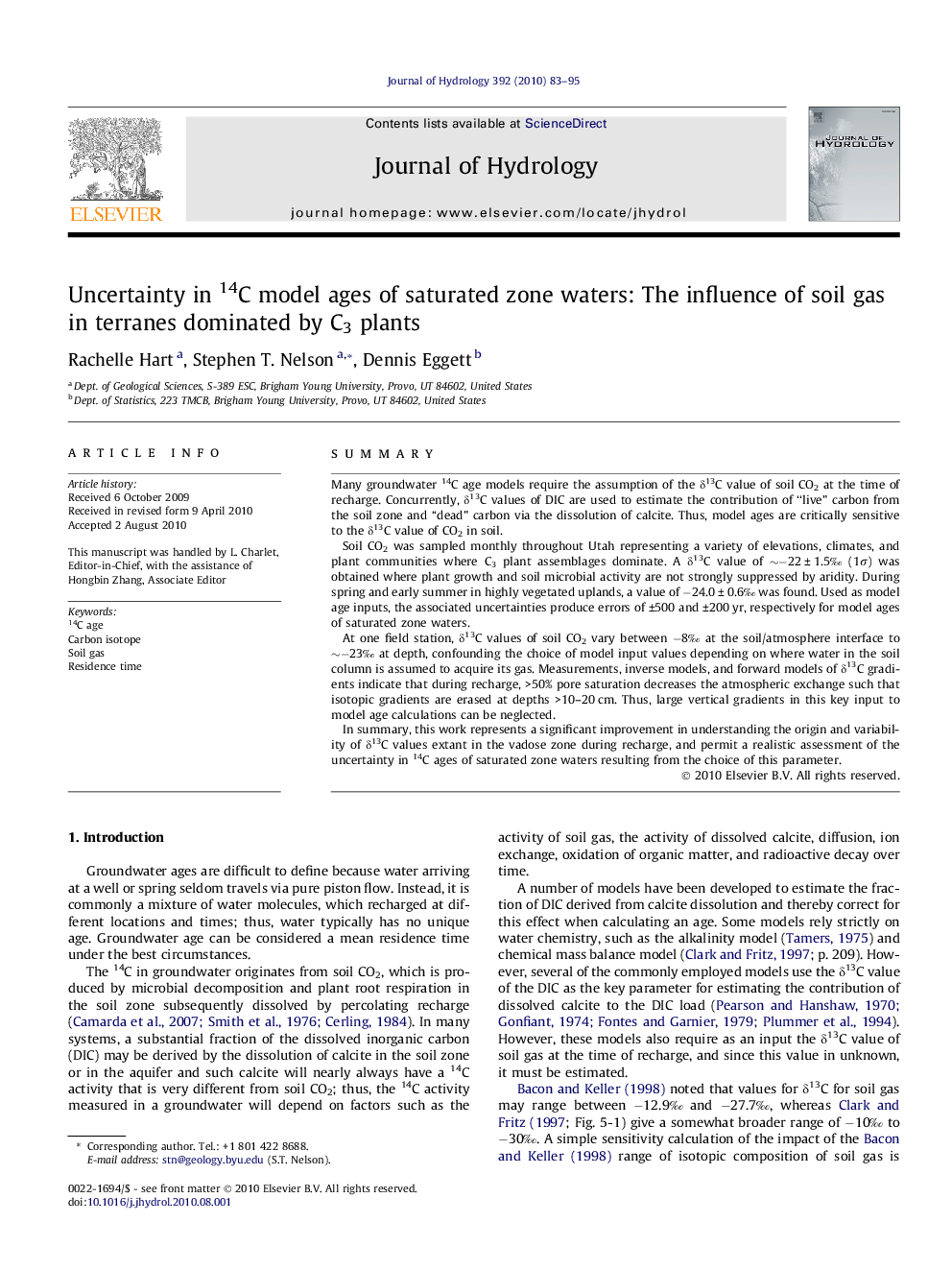| Article ID | Journal | Published Year | Pages | File Type |
|---|---|---|---|---|
| 4578072 | Journal of Hydrology | 2010 | 13 Pages |
SummaryMany groundwater 14C age models require the assumption of the δ13C value of soil CO2 at the time of recharge. Concurrently, δ13C values of DIC are used to estimate the contribution of “live” carbon from the soil zone and “dead” carbon via the dissolution of calcite. Thus, model ages are critically sensitive to the δ13C value of CO2 in soil.Soil CO2 was sampled monthly throughout Utah representing a variety of elevations, climates, and plant communities where C3 plant assemblages dominate. A δ13C value of ∼−22 ± 1.5‰ (1σ) was obtained where plant growth and soil microbial activity are not strongly suppressed by aridity. During spring and early summer in highly vegetated uplands, a value of −24.0 ± 0.6‰ was found. Used as model age inputs, the associated uncertainties produce errors of ±500 and ±200 yr, respectively for model ages of saturated zone waters.At one field station, δ13C values of soil CO2 vary between −8‰ at the soil/atmosphere interface to ∼−23‰ at depth, confounding the choice of model input values depending on where water in the soil column is assumed to acquire its gas. Measurements, inverse models, and forward models of δ13C gradients indicate that during recharge, >50% pore saturation decreases the atmospheric exchange such that isotopic gradients are erased at depths >10–20 cm. Thus, large vertical gradients in this key input to model age calculations can be neglected.In summary, this work represents a significant improvement in understanding the origin and variability of δ13C values extant in the vadose zone during recharge, and permit a realistic assessment of the uncertainty in 14C ages of saturated zone waters resulting from the choice of this parameter.
